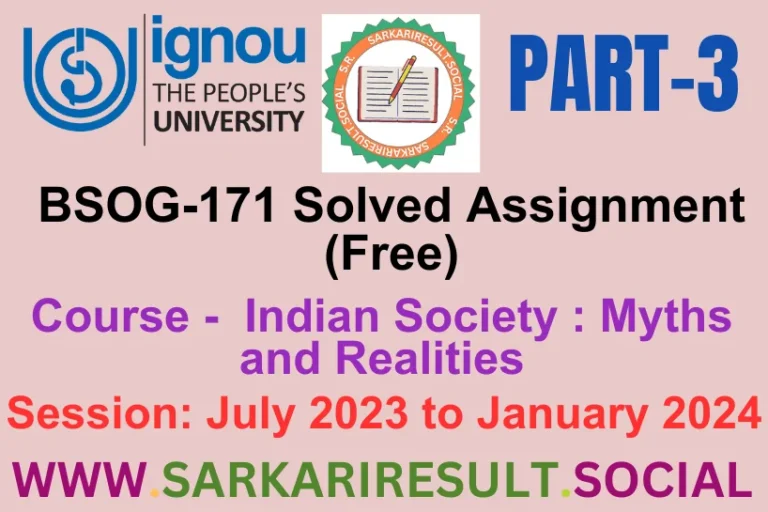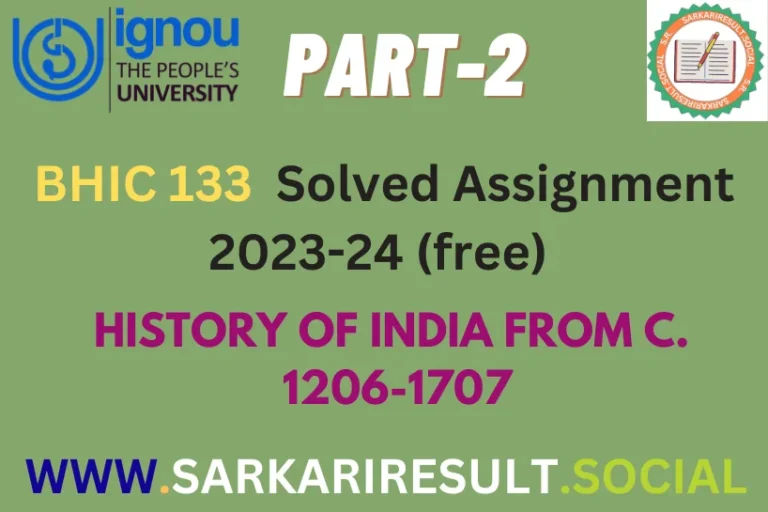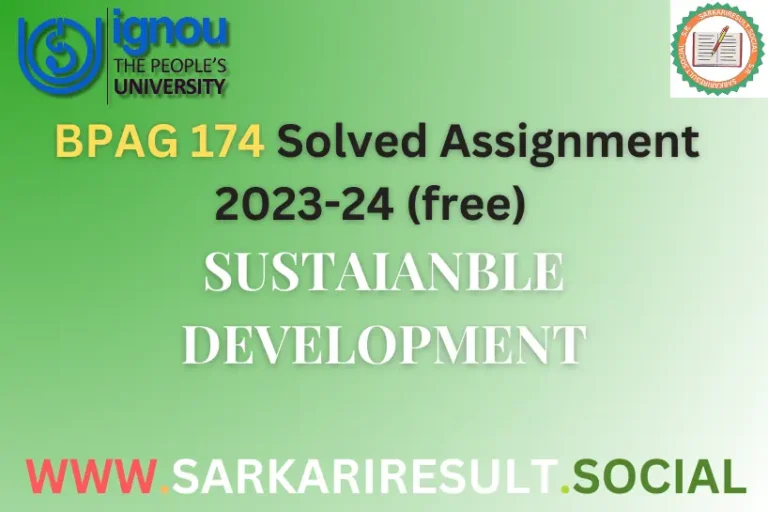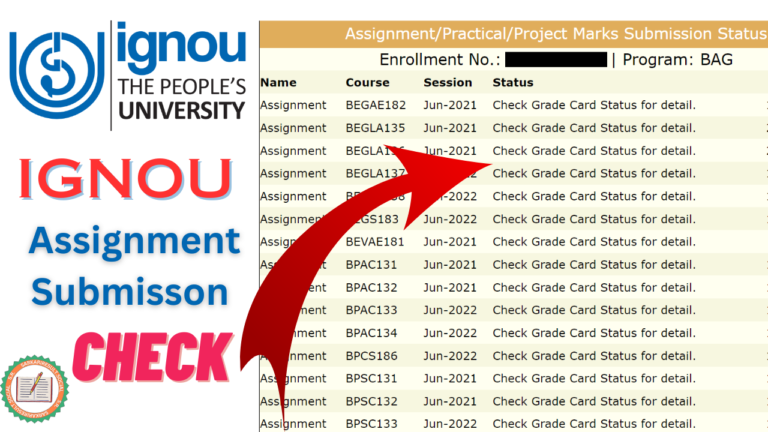BHIC 132 IGNOU Solved Assignment 2023-24 (free) Part -3
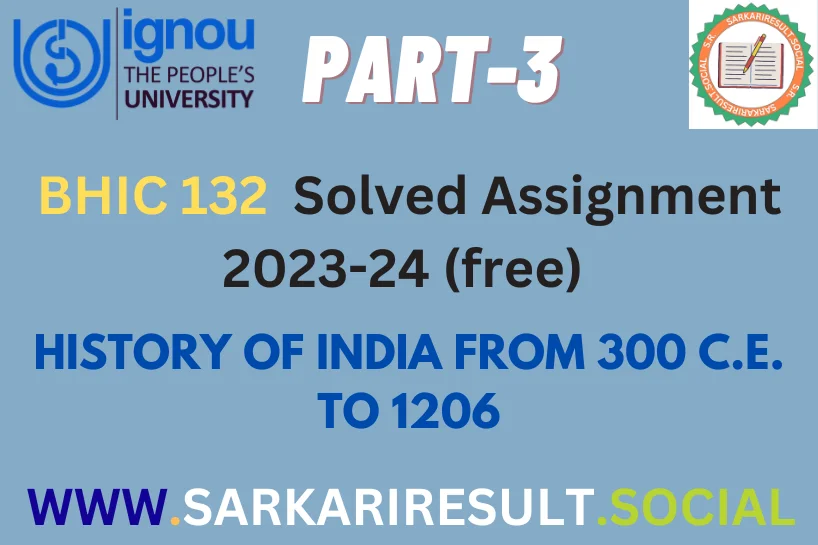
BHIC 132 IGNOU Solved Assignment 2023-24 (free) Part -3
Deepen your historical comprehension through BHIC 132 IGNOU Solved Assignment 2023-24 (free) Part -3, presenting five succinct yet informative questions, each warranting a thoughtful 100-word response. Our meticulously crafted solutions maintain a formal tone while ensuring a comprehensive exploration within specified word limits. Elevate your understanding of historical contexts, meet the criteria succinctly, and excel in your academic endeavors. Access BHIC-132 IGNOU Assignment 3 solutions to enrich your grasp of diverse historical perspectives and refine your scholarly approach.
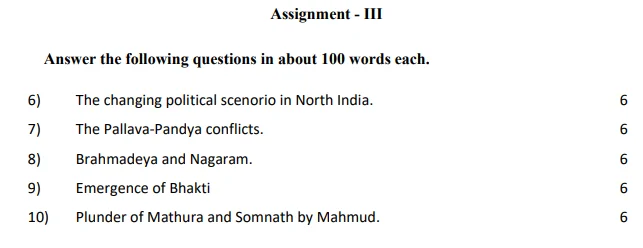
6) The changing political scenario in North India.
Ans. North India’s political landscape evolved from ancient empires like the Mauryas and Guptas to decentralized regional kingdoms in the medieval era. Islamic invasions introduced the Delhi Sultanate, leading to Mughal dominance.
Also Read This: BHIC 132 IGNOU Solved Assignment 2023-24 (free) Part -1
The Mughals’ decline fostered the emergence of diverse regional powers, including Marathas and Rajputs, shaping a fragmented political scenario. This cyclical rise, consolidation, and decline of dynasties have deeply influenced North India’s cultural, religious, and political history.
7) The Pallava-Pandya conflicts.
Ans. The Pallava-Pandya conflicts in South India during the 7th to 9th centuries were a series of battles between the Pallava and Pandya dynasties over territorial control, dominance, and regional supremacy.
Also Read This: BHIC 132 IGNOU Solved Assignment 2023-24 (free) Part -2
Fought primarily in the Tamil-speaking regions of present-day Tamil Nadu, these conflicts witnessed power struggles, invasions, and alliances between the two powerful kingdoms.
The rivalry oscillated between periods of Pallava ascendancy and Pandya resurgence, shaping the political landscape of South India and impacting cultural exchanges and architectural developments, notably in temple construction and regional art.
8) Brahmadeya and Nagaram.
Ans. Brahmadeya referred to land grants donated to Brahmins in ancient India, providing them with agricultural lands, exempt from taxes, and allowing them to perform religious rituals.
Also Read This: BHIC 131 IGNOU Solved Assignment 2023-24 (free) Part -1
These grants aimed to secure religious merit for the donor and maintain social stability. Nagaram, on the other hand, denoted urban settlements or cities in South India during medieval times.
These urban centers were hubs of trade, commerce, and cultural exchange, serving as crucial nodes for economic activities, craft production, and diverse cultural interactions within the region.
9) Emergence of Bhakti
Also Read This: BHIC 131 IGNOU Solved Assignment 2023-24 (free) Part -2
Ans. Bhakti, a devotional movement in medieval India (8th to 17th centuries), emerged as a spiritual path focusing on individual devotion and love for a personal deity, transcending caste and societal barriers. It sought a direct, intimate connection between devotees and their chosen deity, emphasizing devotion, love, and surrender rather than rigid rituals or caste distinctions.
Bhakti saints like Kabir, Ravidas, Mirabai, and others propagated this devotional form across India, expressing spirituality through poetry, songs, and personal experiences, fostering religious inclusivity and influencing cultural, social, and religious transformations in Indian society.
Also Read This: Check BGDG 172 IGNOU solved assignment 2023-24 (Free)
10) Plunder of Mathura and Somnath by Mahmud.
Ans. Mahmud of Ghazni, a Turkic ruler, conducted notorious raids on Indian temples during the 11th century. In 1018 CE, he plundered the sacred city of Mathura, looting its wealth and destroying Hindu temples.
Also Read This: Check top Begae 182 IGNOU solved assignment 2023-24 (Free)
Another infamous incident occurred in 1025 CE when Mahmud attacked the renowned Somnath Temple in Gujarat, seizing its riches and desecrating the holy site. These invasions were not only driven by a quest for wealth but also aimed to undermine Hindu beliefs and institutions. Mahmud’s actions left a lasting impact on India’s cultural heritage and sparked significant outrage and resentment across the subcontinent.


